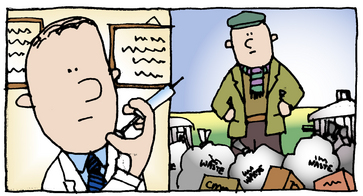Chapter 83 The profession of medicine
Being a medical student means learning about the discipline of medicine. However, more is learnt that is not part of the official medical curriculum. Implicit in medical training is showing students how to behave and act as doctors. Your medical education is a socialization into medicine. Socialization refers to a new recruit being exposed to the predominant norms (expected ways of behaving) and values of an occupation, and gradually absorbing these ideas until they become ‘natural’. Students, for example, learn to take decisions, to deal or cope with cutting up bodies in pathology practicals, but also to adhere to a dress code on the wards, or to talk to patients and staff in a certain way. In other words, one learns to become a medical professional as much as a medical doctor.
The nature of professions
Professions are an important element in the organization of medical care and the structure of society. The former refers to the position that the medical profession has in the health services; the latter refers to the way professions are regarded as special occupations in society. We could ask: ‘What do professionals such as doctors, clergy and lawyers have in common?’ or ‘What is the difference between doctors and rubbish collectors, two occupations we cannot really do without?’ (Fig. 1).
The medical profession incorporates all the above features:




